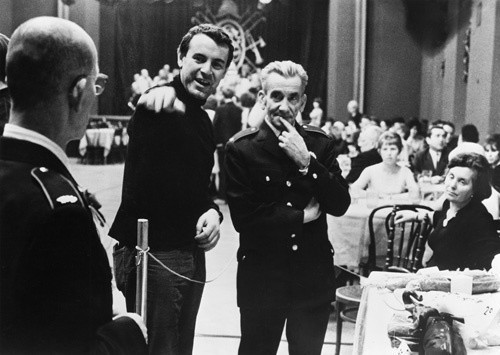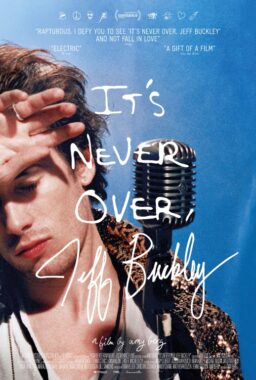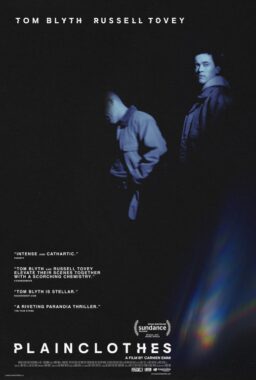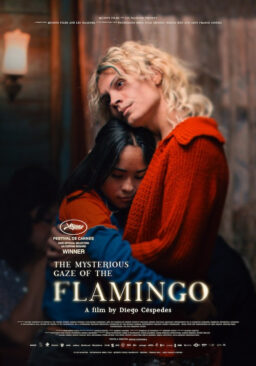Milos Forman, the Czech-born filmmaker who helped revolutionize cinema in his home country before moving to America and becoming one of its most celebrated directors as well, has died. The man behind such celebrated films as “One Flew Over the Cuckoo’s Nest” (1975) and “Amadeus” (1984), both of which won Oscars for Best Picture and earned him prizes for Best Director, passed away from what was described as a short illness at the age of 86 at his home in Connecticut. Mixing together surreal humor, documentary techniques and an interesting blend of cynicism and affection, Forman helped put Czech cinema on the map. When he applied those same techniques to the projects produced in his adopted country, the result was some of the most incisive, knowing and most profoundly American films of his era.
He was born Jan Tomas Forman on February 18, 1932 in Caslav, Czechoslovakia. Both of his parents were killed at Auschwitz and he spent a large portion of his childhood in a boarding school for war orphans. (After the war, he would learn that his actual biological father had survived the way.) Having at one point thought to become a theatrical producer, Forman enrolled in the newly established Film Institute at the University of Prague in the early 1950s, a period that saw him working alongside such future names as director Ivan Passer and cinematographer Miroslav Ondricek (who would work with Forman on a number of films both in Czechoslovakia and America). After graduating, he began making short documentaries and first got some notice for “Audition” (1963), a film intertwining brass bands rehearsing for a contest and young people preparing for a theater audition.

In the early ’60s, the Czech government began a series of cultural reforms aimed at easing controls over what artists could say and do in their work. Forman took full advantage of this by creating a series of films, beginning with “Black Peter” (1964), which commented on the lives of ordinary people with a filmmaking that combined a documentary-like style (including the use of improvisation and non-professional actors) with a biting and deeply anti-establishment sense of humor. His first great success was “Loves of a Blonde” (1965), which followed the story of a small town woman working at a shoe factory who shares a night with a soldier that she meets at a dance and then follows to Prague in the hopes of a longer-lasting relationship. The movie was a success around the world, earned an Oscar nomination for Best Foreign Language Film and helped launch the Czech New Wave.
Forman’s follow-up, “The Fireman’s Ball” (1967, pictured above), was even better—a brilliant satire of the Communist state in which a volunteer fire department attempts to throw a party for their one-time boss on his birthday with disastrous results. Although it hits its satiric targets with pinpoint accuracy, it is never cruel towards its characters and indeed, there is a certain sweetness and sympathy to Forman’s approach that prevents it from degenerating into a mere screed. While “The Fireman’s Ball” was another international success and received an Oscar nomination for Best Foreign Language Film, politicians in Czechoslovakia were not amused by the film and it would go on to be banned in the wake of the Soviet invasion of 1968. At that time, Forman happened to be in Paris in negotiations for his first U.S. production and after realizing that the artistic freedoms that he once had were no more, he elected to emigrate to America.
His first U.S. film, “Taking Off” (1971) was an extension of his Czech films, a counter-culture comedy about the generation gap centered on a middle-aged couple (Buck Henry and Lynn Carlin) whose search for their runaway daughter leads to hilarious efforts to understand both their child and themselves. Although not quite as funny as his previous efforts—and more than a little dated when seen today—it is an interesting attempt to transplant his style into an American context and he once again demonstrates a surprising degree of affection towards characters that others might have looked at only as a source of scorn and ridicule. While it good reviews, “Taking Off” was not a financial success. One person who did take notice of it, however, was actor Michael Douglas. For years, his father, Kirk, had owned the rights to Ken Kesey’s famous counter-cultural novel “One Flew Over the Cuckoo’s Nest” and had struggled to make a film of it. After his father passed the rights on to him, he made a new effort to get the film made and felt that Forman’s humorous yet humane directorial voice was the right one to capture the book’s tricky tone.

At this point I must confess that as a film, “One Flew Over the Cuckoo’s Nest” has always left me somewhat cold. This is not to say that it is not a well-made film containing excellent performances from Jack Nicholson as Randall P. McMurphy, a rebellious criminal faking insanity in the hopes of serving time in a mental ward instead of prison, Louise Fletcher as Nurse Ratched, the autocratic head nurse that he bumps heads with and a supporting cast including such then-unknowns as Danny DeVito, Brad Dourif, Will Sampson and Christopher Lloyd. That said, the film went on to become a smash hit around the world, becoming the only the second of three films to date to win the top five Oscars (Best Picture, Best Actor, Best Actress, Best Director and Best Adapted Screenplay) and is regularly enshrined in lists of the greatest American films of all time.
In a position where he could pretty much make any film that he wanted to as a follow-up, Forman raised eyebrows when it was announced that his next project would be a film version of the hit off-Broadway musical “Hair” (1979). In making a film of this particular show, Forman would be facing a number of unavoidable hurdles—the stage version was not exactly strong on narrative and the immediacy that it had for audiences during its initial stage run would inevitably be lost and transform any film version into a period piece. In bringing it to the screen, Forman and screenwriter Michael Weller made a number of significant changes that strengthened the story, in which a young man from Oklahoma (John Savage) visiting New York City for a couple of days before reporting for military duty falls in with a group of hippies led by the charismatic Berger (Treat Williams), while changing or omitting some of the songs. How one feels about the film depends largely on their feelings towards the original show. Many who loved it on stage felt that Forman missed the essence of the show and transformed it into a garishly overproduced dud that lacked any real connection to either the show or the movement that inspired it. On the other hand, while the film is undeniably uneven, Forman does indeed show some affinity for the counter-culture, no doubt inspired by his own youth living in an oppressive regime, and he presents the big musical numbers with a bold exuberance that extends far beyond the period trappings.

For his next film, Forman signed on for another adaptation of a deeply American story that many felt simply could not be adequately brought to the screen. This was “Ragtime” (1981), the film version of E.L. Doctorow’s 1975 historical novel that weaved together a number of plot threads that mixed real and fictional characters together to create a panoramic view of life in New York City in the early years of the 20th century. For many observers, the only person who could possibly turn it into a film was Robert Altman, who was actually scheduled to do it until he was fired by producer Dino De Laurentis. Rather than try to juggle all the storylines, Forman, reuniting with Michael Weller, chose to focus on one key story—the tale of Coalhouse Walker Jr. (Howard Rollins Jr.), a piano player who is radicalized when the men working under a racist fire chief deliberately destroy his car and his attempts to seek justice are rebuffed—while reducing the others to bits and pieces in the background or eliminating them entirely.
The reaction to this film was mixed—it got good but not great reviews, it received eight Oscar nominations but no actual awards and it proved to be a non-starter at the box-office, at least in part because it had the misfortune to open at the same time as such other high-profile period pieces as “Chariots of Fire” and “Reds” and got lost in the shuffle. And yet, if I had to name one Forman film as my favorite, “Ragtime” might well be the one. Although it necessarily lacks the scope of the original novel, Forman nevertheless manages to distill the feel of the book into a narrative that allows him to fully explore, embrace and excoriate his new home in all of its aspects, good and bad. His recreation of turn-of-the-century New York is exquisite without being overwhelming and the score by Randy Newman is a thing of beauty. He also gets strong work from a massive cast that includes everyone from then-newcomers like Rollins, Elizabeth McGovern and Mandy Patinkin to legends like Donald O’Connor, Pat O’Brien and James Cagney, who came out of a 20-year retirement to portray the police commissioner desperately trying to bring the situation to a close. Largely forgotten today, this film is a genuine treasure and one that is ripe for rediscovery.
Forman had more success with his next project, the screen version of “Amadeus” (1984), his adaptation of the Peter Shaffer play that he had been enamored with after being invited to see what proved to be its first public preview. On paper, the story of Antonio Salieri (F. Murray Abraham), the technically proficient and duly celebrated Italian composer and member of the court of Emperor Joseph II, and the jealous rage that he develops towards Wolfgang Amadeus Mozart (Tom Hulce), a younger and far less refined rival who he recognizes as having been touched with the kind of genuine artistic genius that he himself has been denied, sounds like a dull bit of Oscar bait featuring a bunch of actors capering about in an array of elaborate wigs and costumes. Instead, Forman, who wound up filming most of it in Czechoslovakia, found the heart of the material—that Salieri is less a villain than a tragic figure in the way he is forced to recognize his own mediocrity in comparison to Mozart—and presented in a direct and straightforward manner that made it accessible to audiences of all stripes. The result was a worldwide hit that put Mozart back on the album charts, earned a slew of awards that included eight Oscars, including Best Director, Best Actor for Abraham (Hulce was one of his competitors in the category) and Best Picture, and is now considered to be one of the all-time great films.

His next film, “Valmont” (1989), was an adaptation of Choderlos de Laclos’s famous 1782 novel Les Liaisons Dangereuses. Unfortunately, his retelling of the story of a scheming widow (Annette Being) who bets her caddish lover (Colin Firth) that he cannot seduce a recently married and exceedingly virtuous woman (Meg Tilly) landed in theaters a few months after another version of the story, the hit 1988 film “Dangerous Liaisons.” While Forman’s version did deviate from both that film and the book in some key instances, it quickly disappeared from theaters. And though “Dangerous Liaisons” is definitely the better film, Forman’s take is not without interest as well, thanks to its more direct approach to the material, the sumptuous production design and a performance by Bening.
For his next film, “The People Vs. Larry Flynt” (1996), Forman took one of the more potentially dubious cinematic concepts imaginable—a biopic of the controversial pornographer that chronicled his struggles with both the law and the religious right. Aided by a fantastic script by Larry Karaszewski & Scott Alexander and great performances by Woody Harrelson as Flynt, Edward Norton as his harried lawyer and rocker Courtney Love as his doomed love, Forman transformed it into a genuinely heartfelt celebration of the First Amendment and the right to free speech. It’s a film that could have perhaps only been made by someone who knew what it was like to live in a world where such rights were not always a given. Controversial upon its release and not especially successful at the box office, it won the Golden Bear at the Berlin Film Festival and earned Forman his third and final Oscar nomination.

1999’s “Man on the Moon” found Forman offering viewers another examination of American culture as seen through the eyes of one of its most unusual practitioners, surreal comedian Andy Kaufman. Working once again from a screenplay by Karaszewski & Alexander, Forman clearly sees Kaufman as a riff on Mozart, a genius whose artistic brilliance was largely misunderstood in its day, except only in its broadest and most obvious applications (such as his immaculate Elvis impression and his work as the adorable Latka on “Taxi”), and is still fresh, vital and controversial today. The film essentially winds up becoming a collection of bits that don’t quite add up, but those bits are entertaining enough to watch thanks to Jim Carrey’s incredible and eerily convincing transformation into Kaufman (not to mention alter ego Tony Clifton) and Forman’s obvious affection for Kaufman himself. (Be sure to check out “Jim & Andy: The Great Beyond,” a 2017 Netflix documentary that chronicles the behind-the-scenes chaos that went into the making of “Man on the Moon” that offers glimpses of Forman at work and trying to deal with his beyond-Method star.)
Forman’s last movie was “Goya’s Ghosts” (2006), a not-entirely-successful historical drama involving painter Francisco Goya (Stellan Skarsgard) and his attempts to save a young woman (Natalie Portman) from the clutches of the Spanish Inquisition when she is arrested for heresy. There were other film projects over the years that were announced but never came to fruition but Forman always had something to do even when not working on his own projects. He was named a professor emeritus of film at Columbia University. In 1994, he published his autobiography, Turnaround, and it is a must-read for anyone interested in his career. He appeared before the camera in small roles in “Heartburn” (1986) and “Keeping the Faith” (2000) and there were also the usual array of accolades from around the world celebrating his life and work. Needless to say, Forman deserved all of them and many more for his artistic contributions to the country that he made his home. As anyone who watches his films can readily attest, we were lucky to have him.












